(Originally published in October 2014): Going south on the Intracoastal Waterway this season? Or are you dreaming of making the inland passage from Norfolk to Key West in the future? Here’s some advice about what to expect and suggestions about planning the trip. Our first ICW trip was in 1975 on Gusto, a Rhodes 41 sloop that we sailed from Chicago heading for the Bahamas. The Intracoastal Waterway was Gene’s selling point because he convinced me we didn’t have to do any ocean overnight passages (unless we chose to), and the waterway was a protected system of rivers and canals. It was all I needed to agree to quit our jobs for a year and take off.
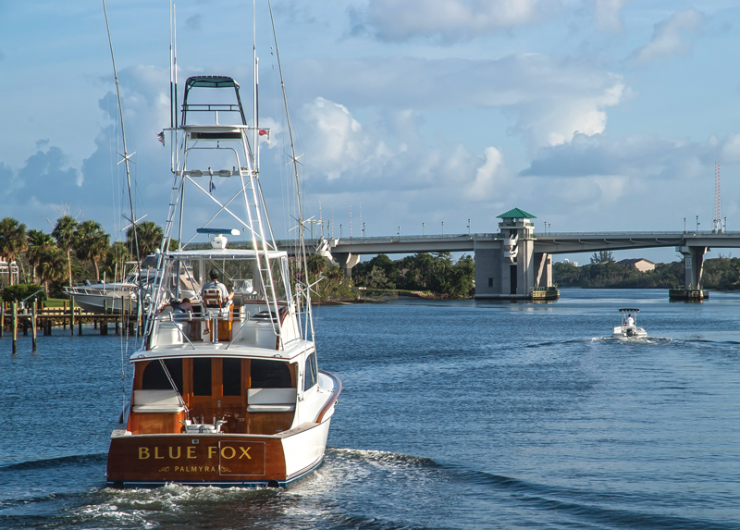
Our most recent trip was in the fall of 2012 aboard Early Bird, a 31-foot lobster yacht that we cruise out of St. Michaels, MD. Over the years, we’ve made several passages on other sailboats and two trawlers. We’ve seen many changes in the build-up of houses and condos and the expansion of small boatyards to mega-marina complexes, but there continues to be miles of lush marshlands, tree-lined shores, and natural wildlife that make it such a diverse landscape.
The boats seem to be larger and better equipped, but there is still an even mix of sail and power cruisers in the 35-foot to 45-foot range. The people aboard run the gamut from professional crew on a mega yacht to a solo sailor on a small boat with an outboard. Many are snowbirds or annual cruisers who spend their winters aboard and who range from salty seniors to young adventurers. We’ve noticed a growing number of young families with kids whom they’re home schooling. The common thread is getting their boats to southern waters to winter in Florida or cross over to the Bahamas. If you’re planning an ICW trip, there are a few basics to decide before committing to the 1243-mile passage from Norfolk to Key West. They revolve around your boat, your time, and your budget.
Is Your Boat Seaworthy for an Extended Cruise?
Any boat should be seaworthy before its owners head out of their slip for the day, let alone on an extended trip. But if an engine fails when you’re in home waters, you know the area and where to find help. If there’s a system failure or emergency when you’re cruising in unfamiliar territory, you have to rely on local services and the research you did about the area before you left. For this, cruising guides and online resources are a good reference. Better yet, find a boatyard with service and support to get you back underway.
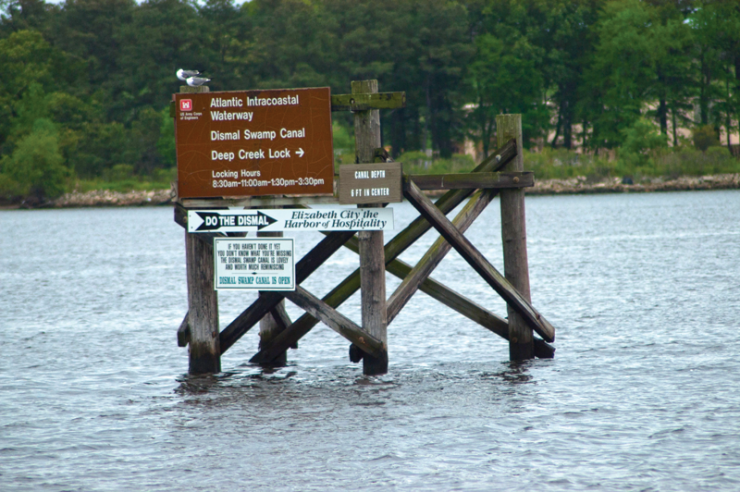
Your ability to handle your boat is another concern because you should have docking and anchoring skills and be comfortable passing and being passed in narrow channels. If you have basic boat handling skills, you can easily learn how to go through locks and under bridges. We always travel with a supply of spare parts, not expensive ones, but those that are necessary if there’s a breakdown or maintenance needed. Our stash includes fuel and oil filters, an extra fan belt, and an impeller for the raw water pump. If you do routine basic maintenance underway, you’re ready, and if there’s a breakdown, you’ve got the part for a marina service tech to do the job. At the very least, have a list of replacement parts you might need so they can be ordered. To service instruments, we carry extra light bulbs, fuses for the radio, depth sounder, chart plotter, and running lights. The fenders, dock lines, and safety gear you carry aboard normally will work for you on the ICW. We also bring long dock lines, a fender board and have two boat hooks for going through the lock on the Virginia Cut route and the two locks on the Dismal Swamp route.
How Much Time Do You Have for the Trip?
Is the ICW trip a delivery or a destination cruise? That’s an important distinction. If you’re getting your boat to a southern destination as quickly as possible so you can return to work, the daily mileage you rack up determines how many days you need. Spend time carefully planning your daily runs based on the distance you can travel in a day and include in that calculation where you’ll stop at night and if you’ll need a marina with fuel and provisioning. Many marinas offer a loaner car for a small amount to go to a grocery store, so ask when making a reservation.
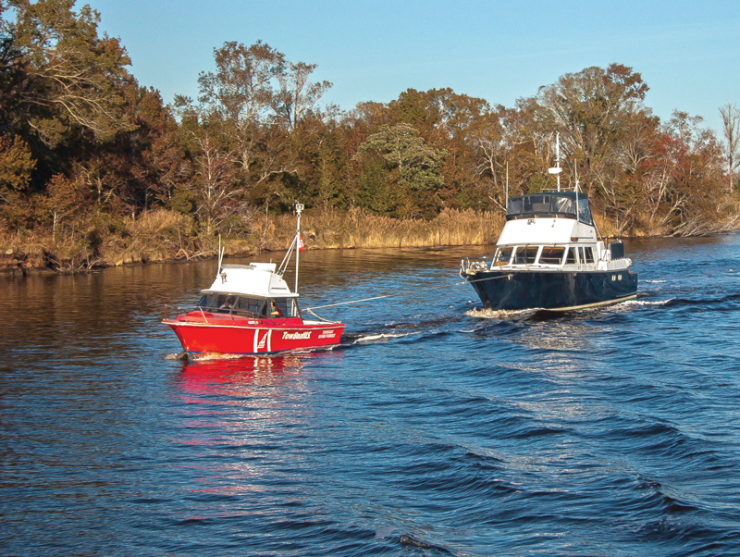
To get a rough estimate of how many days it will take you, try this. You know the speed your boat runs at most efficiently and how many hours you want to be underway; use that to calculate how many days to schedule. For example, if you’re bringing your boat to Fort Launderdale at Mile 1065, that’s 1065 miles from Norfolk. Divide 1065 by let’s say 50 miles a day (number of miles you cruise in a day’s run) and you get approximately 21 days, for a rough estimate of how many days you’ll be underway. Factor in some non-traveling days for bad weather when you’ll stay put or the possibility of a mechanical breakdown when you’ll be spending time at a marina for repairs. And you may find a place like Charleston or Beaufort, SC, that you just like and want to spend more time there.
On a daily basis you may have delays waiting for a bridge with only scheduled openings or one being repaired. We lost a week to Hurricane Sandy and stayed in Portsmouth, VA. When we saw a Navy aircraft carrier head up the river for protection, we knew we made the right choice to stay at Ocean Marine Yacht Center while the superstorm swept up the coast. If we had been on a delivery trip, that delay would have put a major dent in our schedule. Fortunately, we had the luxury of time and had planned to linger along the way like many who stop and visit some of the charming harbor towns along the way.
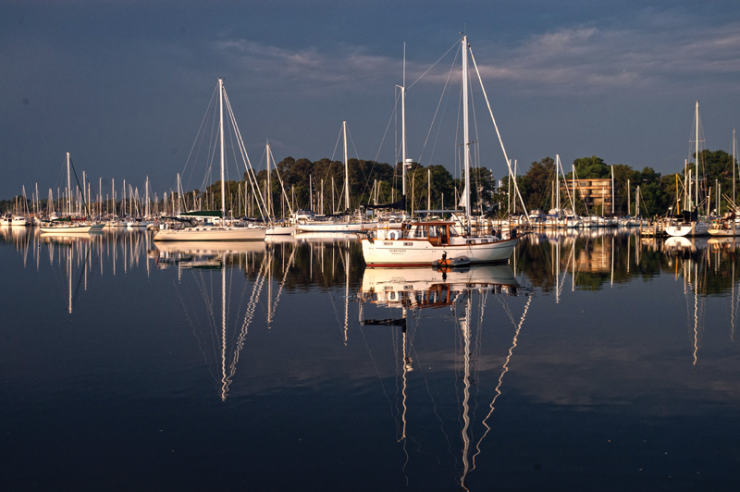
What’s Your Budget?
Thrifty cruisers plan their itinerary to anchor out most nights and schedule stops where provisioning and fuel are available. For ICW anchorages we like these spiral bound resources: “The Great Book of Anchorages: Hampton Roads and Norfolk to the Florida Keys” and “On the Water Chart Guides: Anchor Guides for the Intracoastal Waterway.”
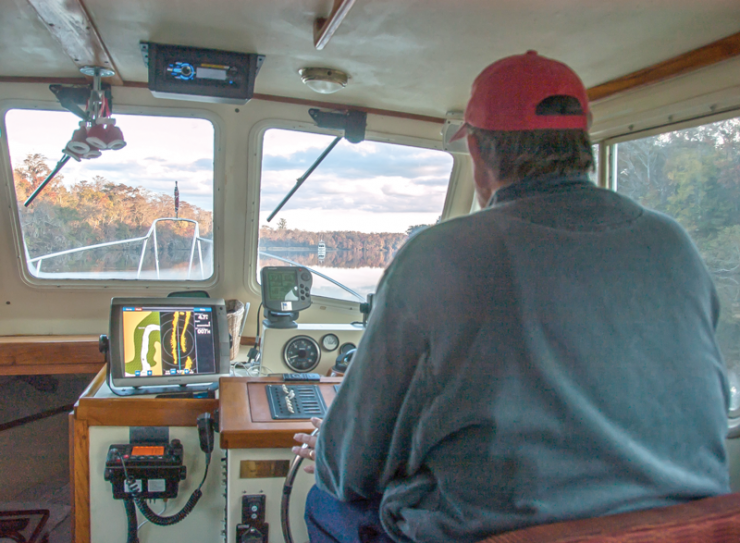
Marina-wise, I use $2 a foot, plus the electrical hook up charge, for a ballpark figure. That’s an average transient rate that can be lower or higher depending on the location and amenities offered. And it is usually more expensive the farther south you go. If you stop at a marina most nights, it can get expensive depending on the length of your boat. For fuel prices we like using the online edition of the Waterway Guide’s Fuel Pricing Reports because it’s usually spot on with the latest information. In September of 2014, I found diesel costs up and down from $4 a gallon (which included tax). Don’t forget to factor in the cost of eating out. Some of the finest and funkiest restaurants are along the ICW, and it sure beats cooking dinner after a long day underway. We always laugh that on some trips we can spend more money wining and dining than we do on anything else.
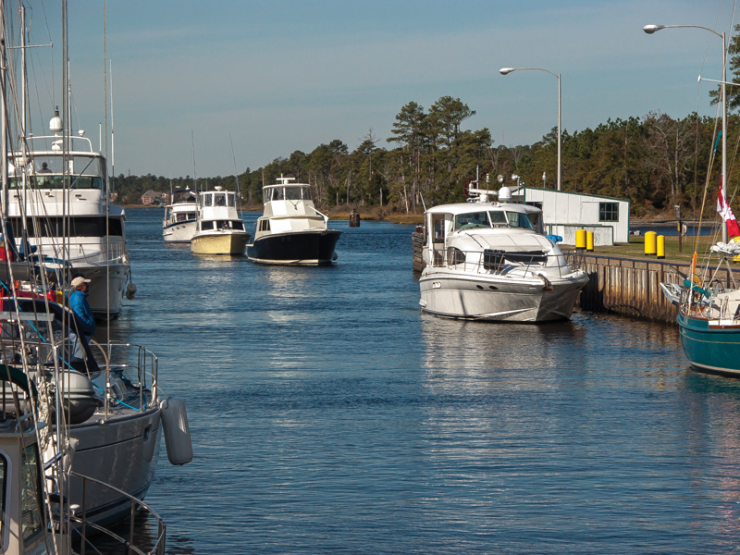
For recommendations we ask local boaters instead of online apps because we found the online resources aren’t always updated. One time in Melbourne, FL, we searched in vain for a restaurant, which had long been closed, but it hadn’t been removed from the database.
Navigating the Waters
The diverse waters — straight landcuts, dicey shallow spots, open ocean inlets, and strong tidal currents — can sometimes make boat handling on the ICW a challenge for the best of us. In some stretches of the waterway, you’ll fight to stay awake because of the boring miles of landcuts; in other areas your adrenaline will keep you very wide awake. We keep the VHF radio on to listen to the boats ahead of us talking about the conditions. Falling tides in Georgia can change the scenery and drop water levels significantly, so we always ask for local advice at marinas along the way. And Active Captain is an online resource for current conditions and real-time experience of boaters who are ahead of you and have posted the conditions they found. Another good resource is Cruisers Net. We have a Garmin Chartplotter, but I wouldn’t be without the backup paper chartbook, the “Intracoastal Waterway Chartbook,” always useful when planning the next day’s run because it clearly marks the mileage so you know your options and what to anticipate further south.
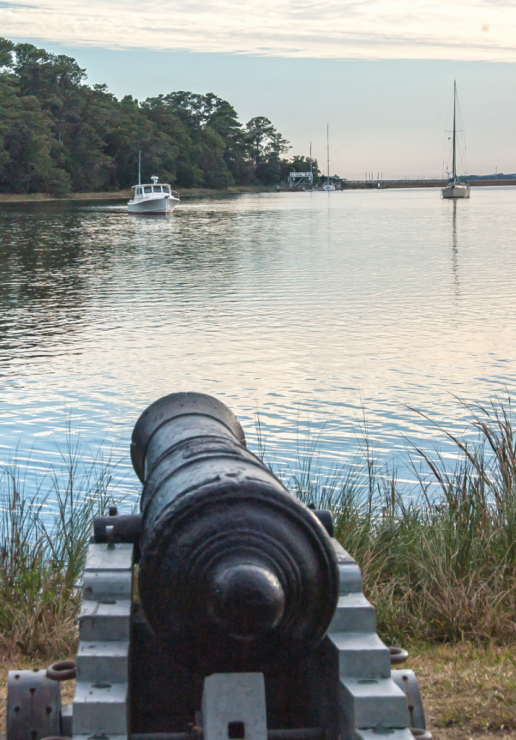
Being There
Before you leave, do you have a reservation at a marina where you’ll keep the boat? There are many popular areas with equally popular marinas, some with a waiting list. You’ll find several now advertise liveaboard rates where there’s often a dock full of cruisers all with the same enthusiasm for spending the winter on their boat. We found the further south you go, it’s usually more expensive. For example, in northern Florida you can stay at Marineland Marina in St. Augustine for $10 a foot plus $125 power and liveaboard fee for a month. At Harbortown Marina in Fort Pierce you’ll pay $13.50 a foot plus power and $100 extended stay a month which includes amenities like a heated pool. On the west coast Legacy Harbour in the heart of Fort Myers the rate is $17 a foot a month plus metered electric and $130 liveaboard fee a month. You can spend hours comparative shopping marinas using a cruising guide as a first step to decide the area you like, and then go online to search for the marinas that interest you.
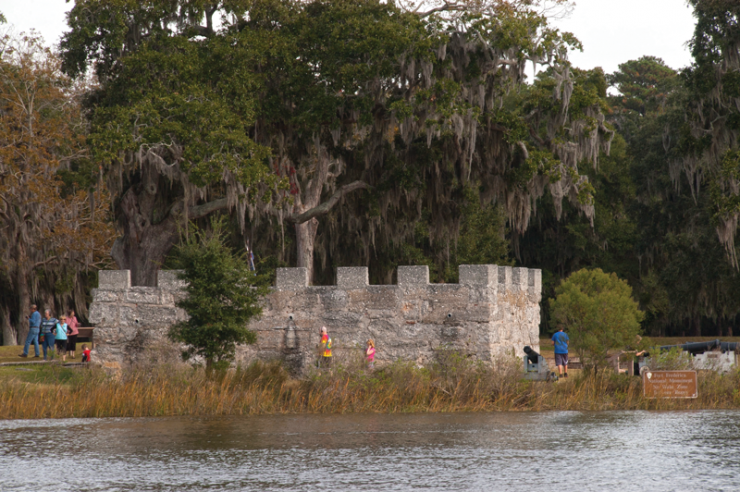
We think the ICW trip is a very social affair. It doesn’t take long to develop a sense of comradery with other cruisers who you’ve seen along the way because they probably travel at the same speed and distance you do. When you meet at a dock, it’s only natural to share a drink and talk about your days on the waterway. However you go — as a quick delivery or as a laid-back cruise, the Intracoastal Waterway is an adventure you won’t forget. You’ll make new friends and share experiences you’ll always cherish.
About the Authors: Katie and Gene Hamilton are authors of "Cruising the Intracoastal Waterway" and "Lessons Learned Cruising the Intracoastal Waterway," e-books available at amazon.com.
More Resources:
- Atlantic ICW and Southern editions of Waterway Guide: waterwayguide.com
- "The Great Book of Anchorages: Hampton Roads and Norfolk to the Florida Keys,"
- Beach House Publications: tgboa.com
- On the Water Chart Guides: onthewaterchartguides.com, cruisersnet.net and activecaptain.com
- "The Intracoastal Waterway Chartbook, Norfolk, Virginia to Miami, Florida" by John Kettlewell and Leslie Kettlewell